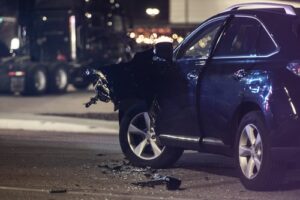When you are hit by a car, you expect the other driver, mainly if they are the person responsible for the accident, to stop and provide information to ensure that the police and insurance companies can deal with the issue effectively. However, a driver may leave the scene of a crash, leaving a victim to deal with the aftermath alone, often without information about the person responsible for the crash. In such cases, finding the hit-and-run driver becomes a priority for the victim and law enforcement to ensure that the person responsible pays for the damage and injury to property and persons involved.

Law enforcement and police officers are usually the first responders to a hit-and-run accident. They collect physical evidence from the scene, take statements from potential witnesses, and gather surveillance camera footage that might have captured the incident. Police reports and accident investigations are vital in tracking down the person responsible. However, the success of finding the liable party largely depends on the availability of compelling evidence.
In hit-and-run cases, the driver who flees the scene can face both criminal and civil charges. This can include criminal charges, as the penalties for fleeing the scene can include hefty fines, imprisonment, and additional charges for related offenses, such as driving under the influence or reckless driving.
From a civil perspective, the injured person has the right to pursue legal action against the hit-and-run driver through personal injury lawsuits.
It’s important to note that the statute of limitations for filing a personal injury claim varies by state, so accident victims should act promptly to protect their rights. An experienced attorney can provide guidance on the legal options available to you.
The penalties for fleeing the scene of an auto accident are severe and serve as a deterrent to prevent drivers from evading responsibility. In many states, fleeing the scene of an accident that resulted in property damage alone may be classified as a misdemeanor, carrying penalties such as fines, community service, and a possible suspension of the driver’s license. However, if the accident involved bodily injury or death, the charge is often elevated to a felony, with much harsher consequences. As such, the criminal charges can span from a misdemeanor or a felony, depending on the severity of the accident and if there are bodily injuries or death.
Felony charges for hit-and-run accidents can lead to long-term imprisonment, significant fines, and a permanent criminal record. Additionally, the driver may face an increase in their auto insurance policy premiums or even cancellation of their insurance coverage.
In Civil cases, if the driver is found, they can be held liable for compensatory damages, including medical treatment, property damage, property repair, and pain and suffering. In some cases, punitive damages may also be awarded to punish the driver for their egregious behavior.
Drivers flee the scene of an accident for various reasons, often rooted in fear, panic, or a desire to avoid legal or financial repercussions. Some common reasons include:
Understanding the reasons behind a driver’s decision to flee can help law enforcement tailor their investigation strategies to apprehend the responsible party.
Locating a hit-and-run driver can be challenging, but law enforcement uses various methods to identify and apprehend the person responsible. Key pieces of evidence include:
Combining these investigative techniques increases the chances of locating the faulty driver.
Finding the hit-and-run driver is not always possible, so uninsured motorist coverage can provide financial protection. This type of insurance policy covers damages caused by uninsured drivers who flee the scene and cannot be identified. Uninsured motorist coverage can help cover medical expenses, property damage, and lost wages, ensuring that the victim receives fair compensation even if the at-fault driver is never found.
Not all auto insurance policies automatically include uninsured motorist coverage, so drivers should check with their insurance provider to ensure they have adequate coverage. If you are involved in a hit-and-run accident, filing an insurance claim under your uninsured motorist coverage can help you recover some of the costs associated with the accident. However, dealing with insurance adjusters and the claims process can be challenging, so it’s advisable to consult with an experienced attorney to ensure your rights are protected.
If you are involved in a hit-and-run accident, taking immediate steps to protect yourself and gather evidence to help law enforcement locate the person responsible is essential. Here are some key actions to take:
 attorney can help you understand your rights, evaluate the extent of damage, and pursue the best course of action for fair compensation.
attorney can help you understand your rights, evaluate the extent of damage, and pursue the best course of action for fair compensation.A car crash can be a life-changing and stressful experience. If you or someone you know has been seriously injured by an at-fault driver in a hit-and-run, you deserve justice. Don’t go through the justice system alone; talk to a qualified car accident attorney at Regan Zambri Long law firm. At Regan Zambri Long, we understand your fears and will do everything we can to answer your questions and keep you informed at every step. For 30 years, the personal injury lawyers and car accident lawyer in Virginia, Washington, and Maryland have been helping injury victims with their claims. We are here for you. Contact us today to schedule a free consultation.